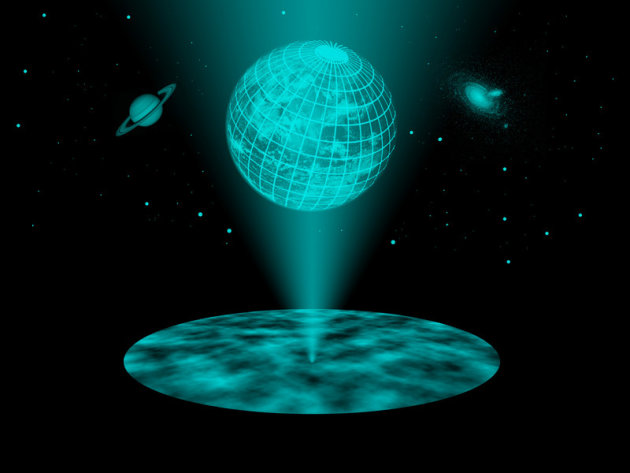Hmm. Interesting. But let's not get too excited just yet.
By Hannah Osborne | International Business Times

We might just have found evidence of another universe bumping into planet Earth, a scientist has very tentatively suggested. While mapping the cosmic microwave background – the light left over from the early universe – Ranga-Ram Chary found a mysterious glow.
"It could also possibly be due to the collision of our Universe with
an alternate Universe whose baryon to photon ratio is a factor of around
65 larger than ours," he wrote.
The idea of a multiverse is nothing new. It says we are but one of many other universes. It builds on the notion of cosmic inflation and while the idea has gained more recognition over recent decades, being able to prove other universes exist has been unsuccessful.
A report on the discovery in New Scientist notes that our universe colliding with another should be possible according to modern theories about multiverses. The glow, it is suggested, is matter from another universe with different physics to ours.
Chary took everything from the CMB – removing stars, gas and dust – and at the end of this he should have found nothing except noise. But this was not the case. Instead, in a specific frequency, patches of the sky looked brighter than they should have. They appear to have come from just a few hundred thousand years after the big bang – when electrons and protons combined to create light-emitting hydrogen.
However, these spots of light were 4,500 times brighter than they should have been. Jens Chluba, from the University of Cambridge, commented: "This signal is one of the fingerprints of our own universe. Other universes should leave a different mark."
The multiverse explanation says that some protons and electrons might have come into contact with another universe – a collision that made them much brighter. "To explain the signals that Dr Chary found with the cosmological recombination radiation, one needs a large enhancement in the number of [other particles] relative to photons," Chluba says. "In the realm of alternative universes, this is entirely possible."
By Hannah Osborne | International Business Times

We might just have found evidence of another universe bumping into planet Earth, a scientist has very tentatively suggested. While mapping the cosmic microwave background – the light left over from the early universe – Ranga-Ram Chary found a mysterious glow.
Chary, a researcher at Planck's US
data centre in California, was mapping CMB when he spotted the
unexpected glow. In his paper, Spectral Variations of the Sky:
Constraints on Alternate Universes, he said that while there is a 30%
chance the fluctuations are nothing unusual, there is also the
possibility they provide evidence of a multiverse.
The idea of a multiverse is nothing new. It says we are but one of many other universes. It builds on the notion of cosmic inflation and while the idea has gained more recognition over recent decades, being able to prove other universes exist has been unsuccessful.
A report on the discovery in New Scientist notes that our universe colliding with another should be possible according to modern theories about multiverses. The glow, it is suggested, is matter from another universe with different physics to ours.
Chary took everything from the CMB – removing stars, gas and dust – and at the end of this he should have found nothing except noise. But this was not the case. Instead, in a specific frequency, patches of the sky looked brighter than they should have. They appear to have come from just a few hundred thousand years after the big bang – when electrons and protons combined to create light-emitting hydrogen.
However, these spots of light were 4,500 times brighter than they should have been. Jens Chluba, from the University of Cambridge, commented: "This signal is one of the fingerprints of our own universe. Other universes should leave a different mark."
The multiverse explanation says that some protons and electrons might have come into contact with another universe – a collision that made them much brighter. "To explain the signals that Dr Chary found with the cosmological recombination radiation, one needs a large enhancement in the number of [other particles] relative to photons," Chluba says. "In the realm of alternative universes, this is entirely possible."
However, not everyone is
convinced. Theoretical astrophysicist David Spergel, from Princeton
University, says he thinks it is worth looking into explanations that do
not involve other universes. "The dust properties are more complicated
than we have been assuming, and I think that this is a more plausible
explanation."

No comments:
Post a Comment